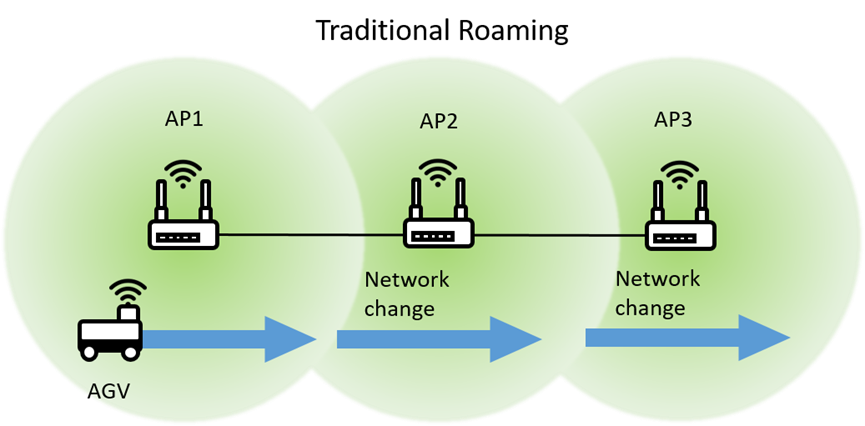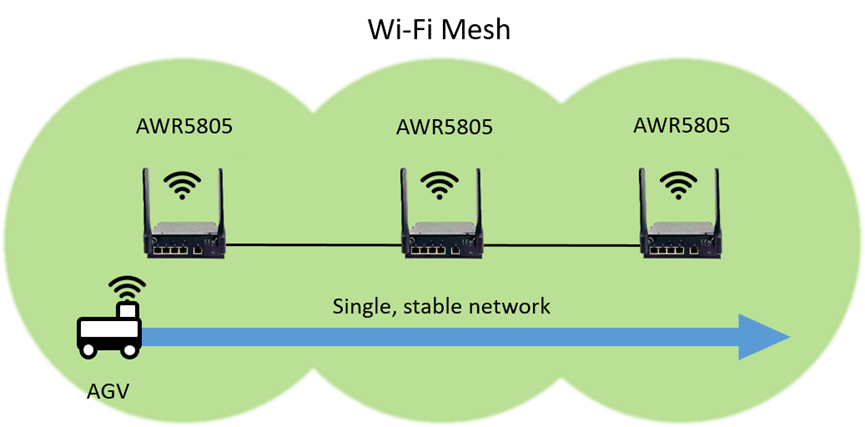December 8, 2022
Using Mesh systems to upgrade industrial Wi-Fi networks

Wi-Fi Mesh is a system joining two or more Wi-Fi access points together, creating an overall Wi-Fi network that covers whole buildings or sites, eliminating dead zones and providing uninterrupted connection throughout large or irregular sites.
Every Wi-Fi access point has its range limit, but many industrial sites such as automated factories, warehouses, and utility stations greatly exceed a single AP’s coverage in size. Even in smaller sites, walled-up rooms and aisles as well as ceilings can obstruct signals, so small sites may also require more than one signal broadcaster to achieve network connection in all areas.
Traditionally, a device moving between multiple access points receives continued connection through Wi-Fi roaming. As the device moves farther away from one access point, the signal will gradually decrease, but the signal from an overlapping point will increase. At a certain location, the device will switch connections to the new access point that provides the strongest signal. You can think of this as public transport—the farther you are from a city center, the less bus lines will be available. To arrive at a remote destination, you will eventually have to change to a bus operated by another municipality.

The drawback of traditional roaming, however, is that technically each point belongs to a different network, so authentication and re-association is required when reconnecting to the new access point—In the bus analogy, a new ticket must be purchased and verified for when you board. This process takes time, so in logistics and power stations, for example, frequent roaming may cause operational delay or even miscommunication. In smart factories with large numbers of connected devices, signal strength may become weakened at the edges of access ranges. A single, stable, site-wide network would be preferred, and this is where Wi-Fi Mesh comes in.
A Wi-Fi Mesh system consists of a main router that connects to the network service provider, and nodes that communicate with the main router, as well as with each other, forming a large, integrated network containing multiple access points. Essentially, all bus lines are operated by the same company, so a single pass takes you wherever you want, and you may board and alight at any city as you please. A connected device can receive uninterrupted signals while moving throughout the system range. The best thing is, with enough nodes, you won’t lose connection even in case one of the nodes fail, because other nodes can cover for it and provide the exact same signals. Device loading is no problem either, since there are no weak areas between access points. And network expansion is as simple as the most basic device setups.

With the wide and easy applications of Wi-Fi Mesh, ATOP’s growing range of wireless solutions have this feature down to pat. Check out the newest AWR5805 router that is created just for this kind of digital transformation, or the CWR5805 that combines powerful tools like Wi-Fi Mesh, 5G-NR, and more. If you have any specific questions, don’t hesitate to contact our experts!